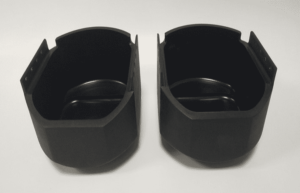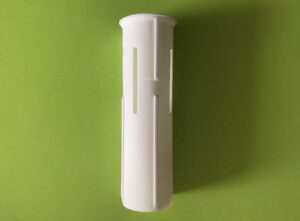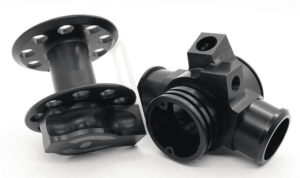English name: Polyoxymethylene(Polyformaldehyde) Chemical name: Polyformaldehyde
A kind of synthetic resin, also known as polyoxymethylene resin, POM plastic, Saigang material, etc.; it is a white or black plastic particle with high hardness, high rigidity and high wear resistance. Mainly used in gears, bearings, auto parts, machine tools, instrument internals and other products that play a role as skeletons.
The specific gravity is 1.41-1.43 g/cm3, the molding shrinkage rate is 1.2-3.0%, the molding temperature is 170-200℃, and the drying condition is 80-90℃ for 2 hours.
Physical properties
(1) POM is a crystalline plastic with a density of 1.42g/cm3. It has good rigidity and is commonly known as “Saigang”. High strength, rigidity, good elasticity, good wear resistance. Its mechanical properties are excellent, the specific strength can reach 50.5MPa, and the specific stiffness can reach 2650MPa, which is very close to metal;
(2) It has excellent properties such as fatigue resistance, creep resistance, wear resistance, heat resistance, and impact resistance, and has a small friction coefficient and good self-lubricating;
(3) It is not easy to absorb moisture, the water absorption rate is 0.22~0.25%, the dimensional stability is good in a humid environment, its shrinkage rate is 2.1% (larger), the size is difficult to control during injection molding, and the heat distortion temperature is 172℃. There are two types of polyoxymethylene, homopolyoxymethylene and copolyoxymethylene. The important difference between the two is: homopolyoxymethylene has high density, crystallinity, and melting point, but it has poor thermal stability, narrow processing temperature range (about 10℃), and stable to acid and alkali. The performance is slightly lower; while the copolyformaldehyde has low density, crystallinity, melting point and strength, but it has good thermal stability, is not easy to decompose, has a wide processing temperature range (about 50°C), and has good acid-base stability.
(4) Good electrical insulation, hardly affected by temperature and humidity;
(5) It is not resistant to strong alkalis and oxidants, and has certain stability to enoic acid and weak acid. POM has good solvent resistance, can withstand hydrocarbons, alcohols, aldehydes, ethers, gasoline, lubricating oil and weak alkalis, etc., and can maintain considerable chemical stability at high temperatures.


Precautions for processing and forming
(1) POM does not need to be dried before processing. It is best to preheat (about 80°C) during processing, which is good for the dimensional stability of the product.
(2) The processing temperature of POM is very narrow (0~215℃), it will decompose when it stays in the barrel for a long time or the temperature exceeds 220℃, and produce strong irritating formaldehyde gas.
(3) The holding pressure of POM material should be relatively large (similar to the injection pressure) to reduce the pressure drop. The screw speed should not be too high and the residual capacity should be small;
(4) POM products have a large shrinkage rate, which is easy to shrink or deform. POM has high specific heat and high mold temperature (80~100℃). The product is very hot when it is demolded. It is necessary to prevent burning fingers.
(5) POM should be molded and processed under the conditions of “medium pressure, medium speed, low material temperature, and higher mold temperature”, and mold temperature control is required when precision products are molded.
application
It can replace most non-ferrous metals, and can be used in automobiles, machine tools, instrument internals, bearings, fasteners, gears, springs, pipes, conveyor belt accessories, electric kettles, pump casings, drains, faucets, etc.

 Deutsch
Deutsch Français
Français 日本語
日本語 Español
Español
